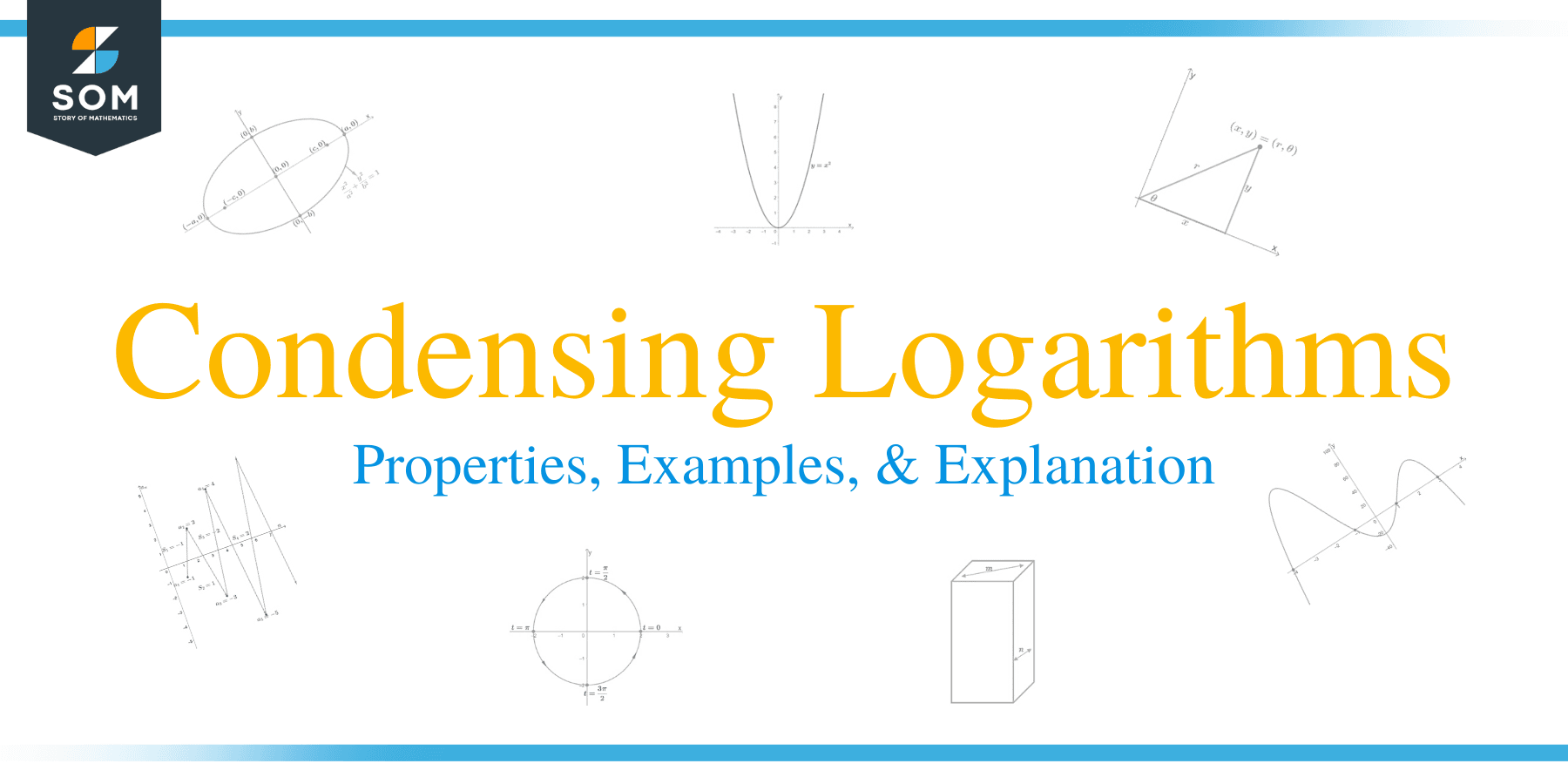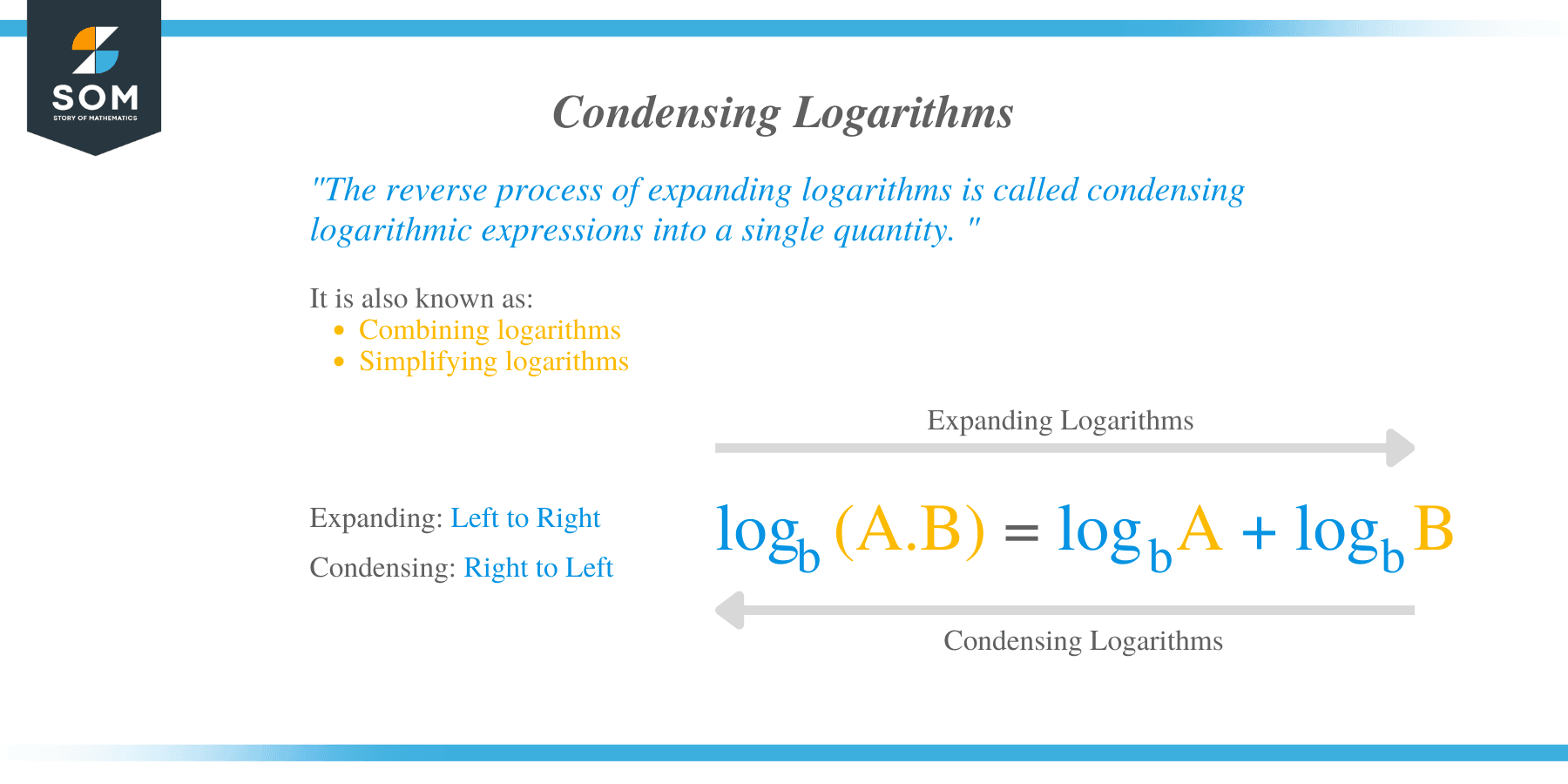- Home
- >
- Condensing logarithms – Properties, Explanation, and Examples
Condensing Logarithms – Properties, Explanation, and Examples
 Condensing logarithms are helpful when we’re given a long logarithmic expression haring similar bases. This helps us simplify expressions size-wise and save space by combining the expressions that share common bases.Condensing logarithmic expressions is the process of using different logarithmic properties to combine different logarithmic terms into one quantity.This article makes use of various concepts we’ve learned in the past, so make sure to review these topics on logarithms before diving right into our main topic – condensing logarithms.
Condensing logarithms are helpful when we’re given a long logarithmic expression haring similar bases. This helps us simplify expressions size-wise and save space by combining the expressions that share common bases.Condensing logarithmic expressions is the process of using different logarithmic properties to combine different logarithmic terms into one quantity.This article makes use of various concepts we’ve learned in the past, so make sure to review these topics on logarithms before diving right into our main topic – condensing logarithms.- Make sure to review the different parts and fundamental definitions of logarithms.
- Refresh the difference between common and natural logarithms.
- Learn how to apply the different logarithmic rules and properties.
 Here are some of the helpful rules that we might need to compress or condense logarithmic expressions.
Here are some of the helpful rules that we might need to compress or condense logarithmic expressions. Rule Name | Algebraic Expression |
Product Rule | $\log_b({\color{blue} A}{\color{green} B}) = \log_b {\color{blue} A} + \log_b {\color{green} B}$ |
Quotient Rule | $\log_b\left(\dfrac{\color{blue} A}{\color{green} B}\right) = \log_b {\color{blue} A} – \log_b {\color{green} B}$ |
Product Rule | $\log_b {\color{blue}A}^n = n\log_b {\color{blue}A}$ |
Identity Rule | $\log_b b = 1$ |
Zero Rule | $\log_b 1 = 0$ |
- Whenever a factor is found outside the logarithm, see if you can apply the power rule right away.
- When combining the terms in between a subtraction or addition operation, check-in the quotient or product rule applies.
- Simplify $\log_1$ or $\log_b b$ using the zero or identity rules.
- The final answer is normally in terms of one rational expression, so double-check when you’re left with extra logarithmic terms.
